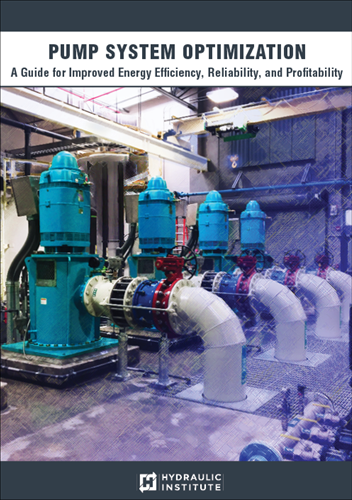Fluid Flow – Pipe Frictional Losses
A Frictional Loss Calculator is available to determine the pipe frictional losses according to the methodology outlined in this section.
Pipe Friction (Major Losses)
The resistance to the incompressible flow of any fluid (head loss) in any pipe may be computed from Equation 3.A.1:
(Eq. 3.A.1)
where:
- hf = Frictional resistance (head loss) in feet of fluid
- L = Length of pipe in feet
- D = Average internal diameter of pipe in feet
- v = Average velocity in pipe in feet/second
- g = Acceleration due to gravity in feet/second/second. Hereafter, the value 32.2 ft/s2 for sea level and 45 degrees latitude will be used.
- f = Friction factor
The Colebrook Equation (Eq. 3.A.2) offers a reliable means for computing the Darcy-Weisbach friction factor (f) to be used in Equation 3.A.1.
(Eq. 3.A.2)
where:
- ε = absolute roughness, ft
- Re = Reynolds number for fluid flow
Another common form, which can be solved without iteration, is shown in Equation 3.A.3.
(Eq. 3.A.3)
Reynolds Number
The Reynolds number (Re) is a non-dimensional ratio of inertial forces to viscous forces and is used to help scale data over a range of pipe sizes, fluid properties, and flow conditions. It is used as the basis for the Moody Diagram to determine friction factors and pressure/head losses.
The Reynolds number is defined as:
(Eq. 3.A.4)
where, for cylindrical pipes:
- ρ is fluid density in lbm/ft3
- v is fluid velocity in ft/s
- D is pipe inner diameter in feet
- μ is dynamic viscosity in lbf·s/ft2
- 𝜈 is kinematic viscosity in ft2/s
- Q is volumetric flow rate in ft3/s
- A is pipe cross-sectional area in ft2
At Reynolds numbers less than about 2000, the flow tends to be laminar where it is traveling in a smooth, orderly manner with little mixing. At Reynolds numbers higher than about 4000, the flow is considered turbulent, with eddies forming and irregular motion.
Pipe Roughness
Pipe roughness (ε) varies with pipe material, age, usage, fluid transport and lining. Table 3.A.1 gives example values for some clean materials.

Pump Piping – Practices to Improve Reliability and Operation – Recorded Webinar Series
Learn the requirements for pump piping design per the requirements in ANSI/HI 9.6.6. Inlet and outlet piping requirements and case studies. Wet well connections, modeling, parallel pump piping, pump station retrofit piping and more.
Roughness Values
| Material | Roughness, ε (ft) |
|---|---|
| Commercial steel or wrought iron | 0.00015 |
| Drawn tubing - glass, brass, plastic | 0.000005 |
| Galvanized iron | 0.0005 |
| Cast iron - uncoated | 0.00085 |
| Cast iron - asphalt dipped | 0.0004 |
| Concrete | 0.001 - 0.01 |
| Riveted steel | 0.003 - 0.03 |
| Wood stave | 0.0006 - 0.003 |
| Brass or copper (tubing) | 0.000005 |
| Aluminum, Lead | 0.000005 |
| Fiberglass | 0.0000164 |
| Stainless steel | 0.00005 |
| Rubber, smoothed | 0.000033 |
| Carbon steel (cement-lined) | 0.005 |
| Water mains with tuberculations | 0.004 |
Determining the frictional roughness of old pipes is beyond this tutorial. Increases in roughness with age depend on the particular chemical properties of the fluid and the metal with which they are in contact. Prior experience or testing should be used to determine an accurate value. For commercial installations, 15 percent should be added to the values shown above.
Friction Factor Diagrams
As previously stated, the resistance to the incompressible flow of any fluid (head loss) in any pipe may be computed from equation (3.A.1)
Values of (f) may be obtained directly from Fig. 3.A.1 based on the Reynolds Number (Re) and Relative Roughness (ε/D) of the pipe. Values of (ε) may be obtained from the Roughness Values in Table 3.A.1 where the pipe is new clean asphalt-dipped cast iron, new clean commercial steel or wrought iron, or other materials as shown. There will be probable variations in (ε) for these materials.
If the Reynolds Number is less than 2000, the flow is laminar and the friction factor for any fluid in any pipe is given by the equation 3.A.5.
(Eq. 3.A.5)
Moody Diagram [1]
If the Reynolds Number is above 4000, the flow will usually be turbulent, and the Moody Diagram pictured below can be used to determine the friction factor. The range Re = 2000–4000 is called the critical zone in which the flow may be highly unstable and the friction factor indeterminate.

Kinematic Viscosity
Values of the kinematic viscosity (v) at various temperatures are given in Fig. 3.A.2 for a number of different fluids. The Reynolds Number is calculated using Equation 3.A.4. It is absolutely essential that viscosities obtained from sources be expressed in the correct units, typically cm^2/s (Stokes) or ft^2/s. Kinematic viscosities measured in stokes or centistokes may be converted to viscosity in ft^2/s by equations 3.A.6.
(Eq. 3.A.6)
Additional information on viscosity can be found here.


Pump System Optimization Guidebook (PSO)
This guidebook is intended to assist those who need to understand details of pump system optimization coupled with important capital equipment decisions. It presents practical information for those who have not had broad exposure to pumping systems and for those who wish to improve the systems for which they are responsible.
References
- L.F. Moody, "Friction factors for Pipe Flow", Trans. A.S.M.E., Vol 66, 1944
Last updated on July 19th, 2024